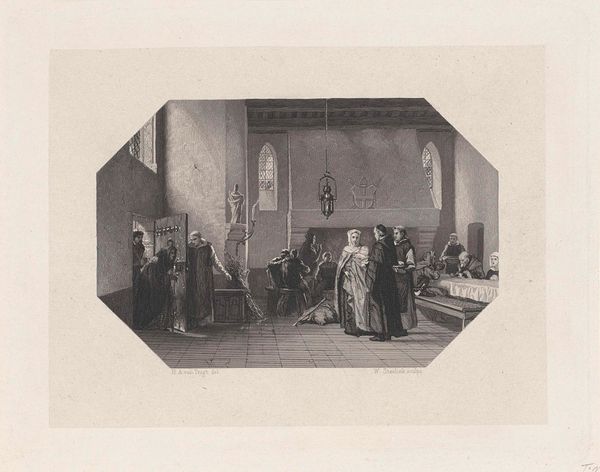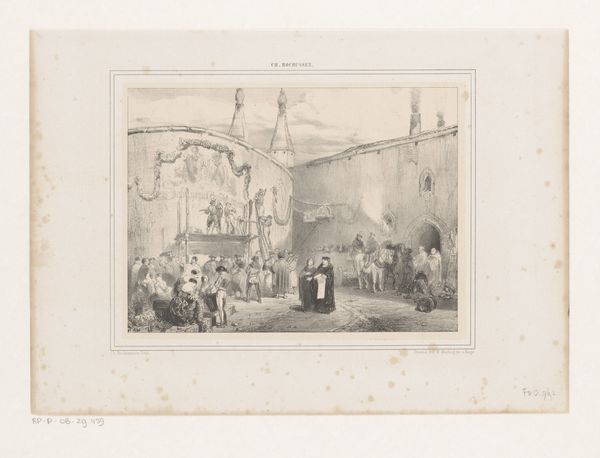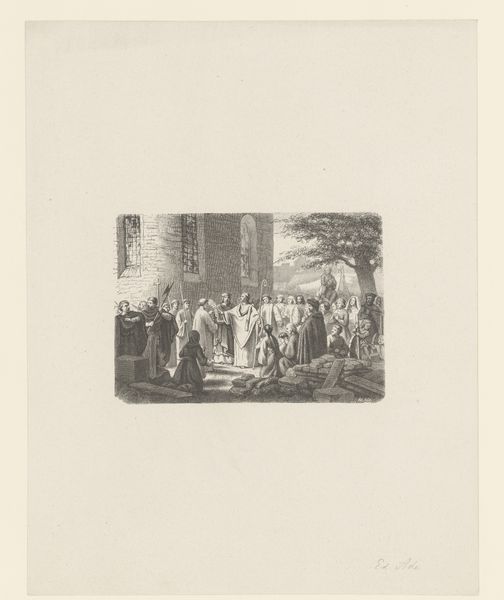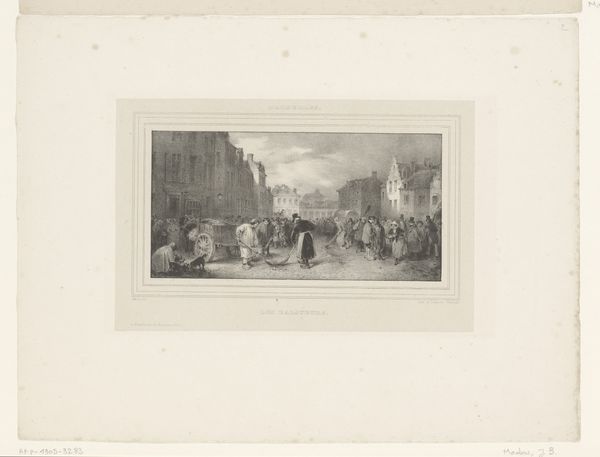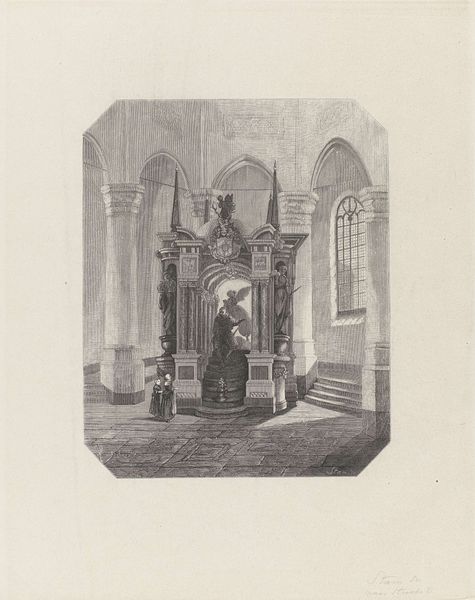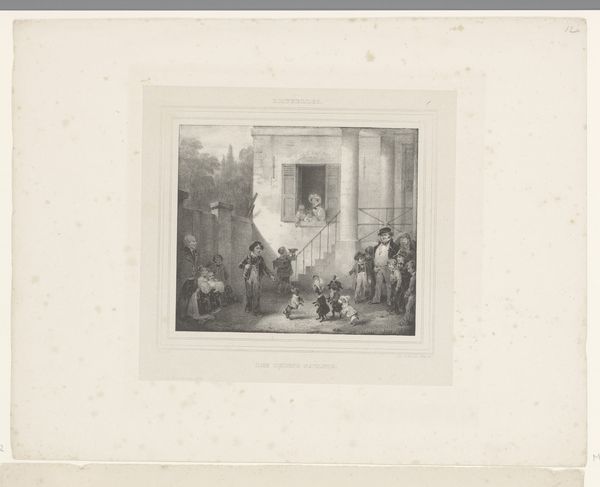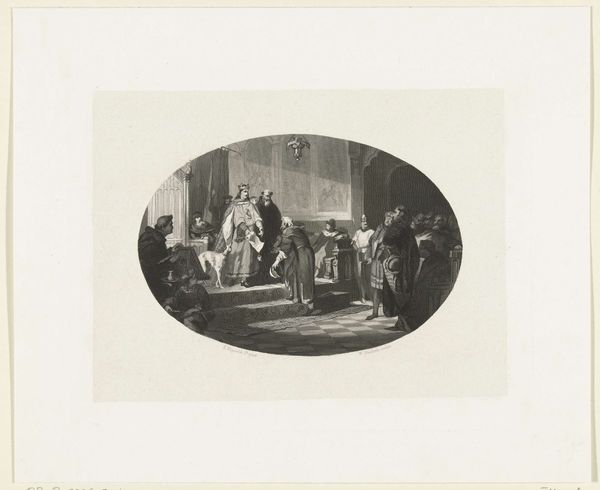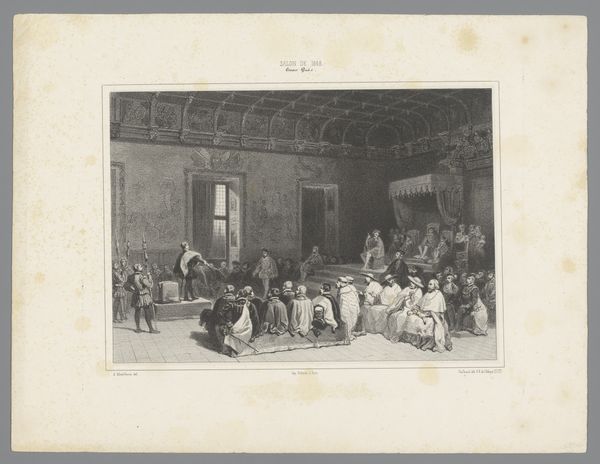
drawing, paper, ink
#
drawing
#
paper
#
ink
#
genre-painting
#
academic-art
#
realism
Dimensions: height 365 mm, width 547 mm
Copyright: Rijks Museum: Open Domain
Curator: "Kinderen krijgen catechese in de kerk," or "Children Receiving Catechism in Church," is the title of this drawing rendered in ink on paper. Johannes Bosboom completed this piece sometime between 1827 and 1891. It's currently housed here at the Rijksmuseum. What's your initial take on this genre scene? Editor: The high contrast of light and shadow creates a solemn atmosphere. The composition, with the strong verticals of the architecture, lends the work a sense of austere grandeur. Curator: I'm interested in how Bosboom is presenting religious instruction within the socio-political context of the Netherlands in the 19th century. How were ideas of religious authority and social order being imparted to the young through education, especially when viewed through the lens of colonial history? What were the pedagogical implications inherent to faith, indoctrination, or lack thereof? Editor: An interesting interpretation. Structurally, I notice the drawing is bisected into defined zones. There’s the architectural space that creates the backdrop, and the distinct gathering of figures assembled within. It creates a clear separation between the divine and the mortal, if you will. Curator: But notice how Bosboom uses the teacher's position to reinforce a paternalistic structure, which serves to mirror Dutch society itself. I would contend that the image subtly promotes cultural biases, while projecting this assumed unity and shared values that were used to normalize control. Editor: Certainly a plausible interpretation. Zooming in though, I am fascinated with the masterful use of ink. The crosshatching and line work creates a tangible texture, and models the soft gradations of light. These choices amplify a tangible sense of depth and space within a relatively monochrome palette. Curator: It is essential to see the figures not just as aesthetic elements but as part of a larger narrative of religious education and its relationship to power, gender, and societal change. What impact does mandatory religious schooling have on future civic and political participation? Bosboom offers just a narrow snapshot. Editor: I concede, I find your focus very valid. Ultimately, it does make me re-assess the inherent dynamics at play, even beyond the formal qualities. Curator: Exactly. I hope we have offered listeners multiple points to consider!
Comments
No comments
Be the first to comment and join the conversation on the ultimate creative platform.

